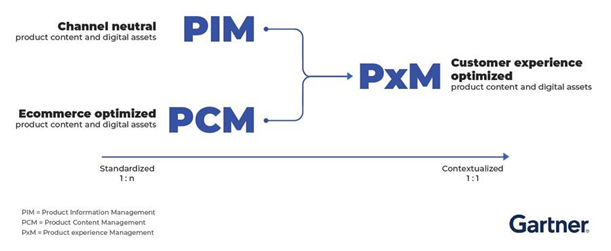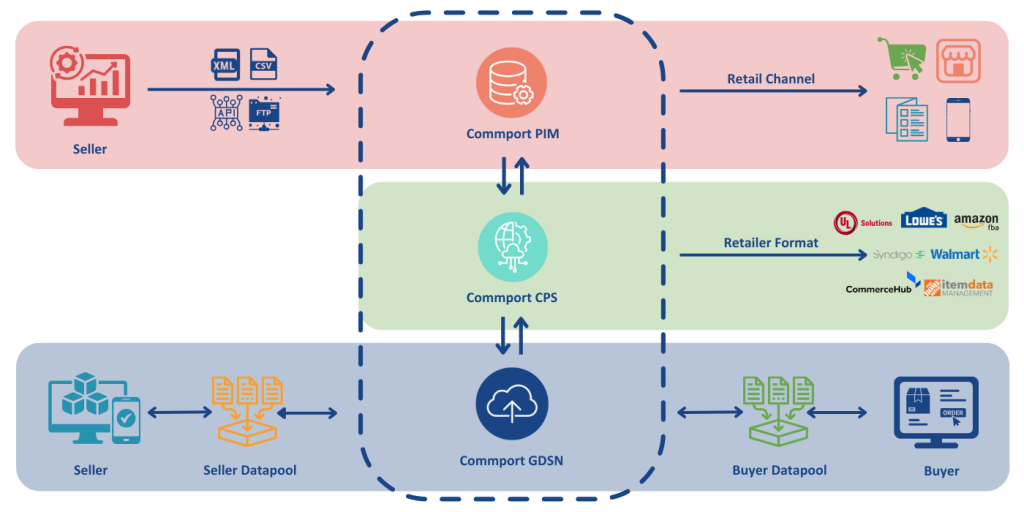Introduction
In today’s competitive market, businesses face increasing pressure to deliver exceptional product experiences that resonate with consumers. Whether you are an established brand or a budding startup, the way you present your products to the market can make or break your success. By focusing on engaging product descriptions, compelling visuals, and streamlined user experiences, you can effectively capture your target audience’s attention and convert them into loyal customers. Modern shoppers demand accurate, engaging, and personalized product information across various touchpoints. This is where Product Experience Management (PXM) becomes a game-changer.
PXM is not just about managing product data, it’s about creating experiences that captivate customers, build trust, and drive sales. Whether you’re a manufacturer, retailer, or supplier, mastering PXM is essential for growing your brand in an omnichannel world. In this blog, we’ll explore what PXM is, how it fosters brand awareness, and why businesses are increasingly investing in PXM solutions.
Key takeaways
- Product Experience Management (PXM) focuses on delivering consistent, engaging, and personalized product content across all sales channels.
- It ensures accurate, high-quality product information that enhances customer trust and purchasing decisions.
- PXM combines data management with customer insights to tailor product experiences for specific audiences.
- It supports omnichannel strategies, ensuring a seamless shopping experience regardless of platform.
- Implementing PXM helps businesses improve brand loyalty, boost sales, and streamline product data management.
What is Product Experience Management?
Product Experience Management (PXM) is the strategic process of managing, enriching, and delivering consistent and personalized product information across all customer touchpoints. It ensures that the right product information reaches the right audience, at the right time, and in the right format.
The significance of PXM extends beyond mere aesthetics; it encompasses the entire lifecycle of a product, from development to delivery. By ensuring that every touchpoint reflects the brand’s values and meets consumer expectations, businesses can create a coherent and compelling narrative around their products. This holistic approach allows organizations to anticipate customer needs, streamline operations, and enhance overall satisfaction. In doing so, they can build a robust reputation that resonates with their target audience, ultimately driving sales and encouraging repeat business.
Moreover, effective product experience management contributes to improved decision-making processes within a company. By analyzing customer interactions and preferences, businesses can glean valuable insights that inform product development, marketing strategies, and customer service initiatives. This data-driven approach not only enhances product experience but also aligns it closely with consumer desires and market trends, ensuring that organizations remain agile and responsive in a dynamic business environment.
Unlike traditional Product Information Management (PIM), which focuses on organizing and centralizing product data, PXM takes it a step further by tailoring this data to create engaging customer experience.
Key Components of PXM
- Centralized Product Data: Streamlining and organizing product information from various sources.
- Enrichment: Adding engaging content like images, videos, and compelling descriptions.
- Personalization: Adapting product information to meet the needs of specific audiences or markets.
- Channel Optimization: Delivering product information in a format suited for different platforms (e-commerce sites, mobile apps, marketplaces, etc.).
- Analytics: Monitoring how product information impacts customer engagement and sales performance.
By implementing PXM, businesses can ensure their product content is not only accurate but also engaging and optimized for every customer journey stage.
How does PXM relate to PIM?
PIM (Product Information Management) and PxM (Product Experience Management) are two interconnected concepts essential for modern commerce. While they are distinct, they work together to create a seamless and engaging customer experience.

PIM
PXM
Focus: Centralized management of product data.
Function: Collects, organizes, and enriches product information.
Outcome: Accurate and consistent product data across channels.
Focus: Optimizing product content for different channels and audiences.
Function: Creates engaging product experiences through personalization and storytelling.
Outcome: Increased customer engagement, conversions, and brand loyalty.
How they relate
PIM provides the raw materials for PxM to work its magic.
PxM leverages PIM data to create tailored experiences.
Together, they drive sales and customer satisfaction.
Think of it like this: PIM is the backstage crew, ensuring all product information is accurate and accessible. PxM is the front-stage performer, using that information to create a captivating show for customers. In essence, PIM is the foundation, and PxM is the building that creates the ultimate customer experience
How Product Experience Management Helps Businesses Grow Brand Awareness
In the digital-first world, brand awareness is closely tied to the quality of a company’s product content. Consumers today rely heavily on online research before making purchasing decisions, meaning product experiences directly influence their perception of your brand.
Here’s how PXM contributes to building brand awareness:
- Delivering Consistent Information Across Channels
Consistency builds trust. PXM ensures that product descriptions, images, and specifications are uniform across e-commerce platforms, marketplaces, and physical stores. This consistency strengthens your brand identity and builds credibility with consumers.
- Personalized Experiences for Diverse Markets
Different regions and demographics have unique needs. PXM allows businesses to localize content, ensuring that language, cultural nuances, and preferences are considered. For example, a clothing retailer can showcase weather-appropriate collections based on the customer’s location.
- Enhancing Product Discoverability
Optimized product content improves visibility in search engines and marketplaces. By including SEO-friendly keywords, detailed descriptions, and high-quality visuals, PXM boosts your product’s chances of being found online.
- Encouraging Customer Engagement
Rich and interactive content like 360-degree product views, instructional videos, or AR features engages customers and encourages them to spend more time exploring your offerings. Engaged customers are more likely to remember your brand and recommend it to others.
- Fostering Customer Trust
Inaccurate or incomplete product information can lead to negative customer experiences and returns, damaging your brand reputation. PXM minimizes these risks by ensuring accuracy and completeness, fostering long-term trust with your audience.
Getting Started with a Product Experience Management Solution

Adopting a PXM solution can seem overwhelming, but a structured approach ensures a smooth implementation.
Step 1: Assess Your Current Product Data
Evaluate the state of your product information. Is it centralized, accurate, and complete? Identify gaps and redundancies to understand what needs improvement.
Step 2: Define Clear Goals
Set measurable objectives for your PXM strategy. Whether it’s improving product discoverability, reducing returns, or increasing conversion rates, clear goals will guide your implementation.
Step 3: Choose the Right PXM Solution
Select a solution that aligns with your business size, industry, and specific needs. Leading PXM platforms offer features like integration with e-commerce systems, real-time data updates, and user-friendly interfaces.
Step 4: Enrich Product Data
Enhance your product information with rich media, compelling descriptions, and localized content to ensure it resonates with your target audience.
Step 5: Integrate Across Channels
Sync your PXM solution with your e-commerce platforms, marketplaces, and other sales channels to maintain consistency.
Step 6: Monitor and Optimize
Regularly track performance metrics such as customer engagement, sales conversion rates, and return rates. Use these insights to refine your product content strategy.
Benefits of Product Experience Management (PXM)
PXM isn’t just a tool; it’s a transformative strategy for businesses aiming to excel in a competitive market. Here are the key benefits:
- Improved Customer Satisfaction
High-quality, accurate, and engaging product information enhances the overall shopping experience, increasing customer satisfaction and loyalty.
- Higher Conversion Rates
Personalized and enriched product content helps customers make informed decisions, leading to higher conversion rates.
- Reduced Returns
By providing precise and detailed product information, PXM reduces the likelihood of returns due to unmet expectations or misunderstandings.
- Operational Efficiency
A centralized PXM system streamlines product data management, reducing manual efforts and minimizing errors.
- Stronger Brand Identity
Consistent and engaging product content reinforces your brand image and differentiates your business in the marketplace.
- Faster Time-to-Market
PXM enables quicker updates and deployment of product content, helping businesses respond swiftly to market demands.
Conclusion
In the fast-paced digital economy, where customers demand personalized and engaging shopping experiences, Product Experience Management (PXM) emerges as a vital strategy for business growth. By delivering consistent, accurate, and enriched product content, PXM not only enhances customer journey but also strengthens brand awareness, drives conversions, and reduces operational inefficiencies.
Businesses that embrace PXM gain a competitive edge, ensuring they stay relevant in an ever-evolving market landscape. Whether you’re just starting or looking to refining your PXM strategy, investing in a comprehensive PXM solution is a step toward long-term success.
Download: GDSN Buyers Guide
Empower your business with global data synchronization; download our GDSN Buyer's Guide today and take the first step towards streamlined, accurate, and compliant product data management.
Commport Datapool Solutions
Frequently Asked Questions
While PIM focuses on organizing and centralizing product data, PXM takes it further by personalizing and optimizing this data to create engaging customer experiences.
PXM improves product discoverability, boosts customer engagement, and ensures consistency across channels, all of which are crucial for e-commerce success.
Retail, manufacturing, distribution, and consumer goods industries benefit significantly from PXM due to their reliance on accurate and engaging product content.
By providing detailed and accurate product information, PXM helps customers make informed decisions, reducing the chances of returns due to unmet expectations.
Consider factors like scalability, integration with existing systems, ease of use, and the ability to deliver personalized experiences when selecting a PXM platform.





